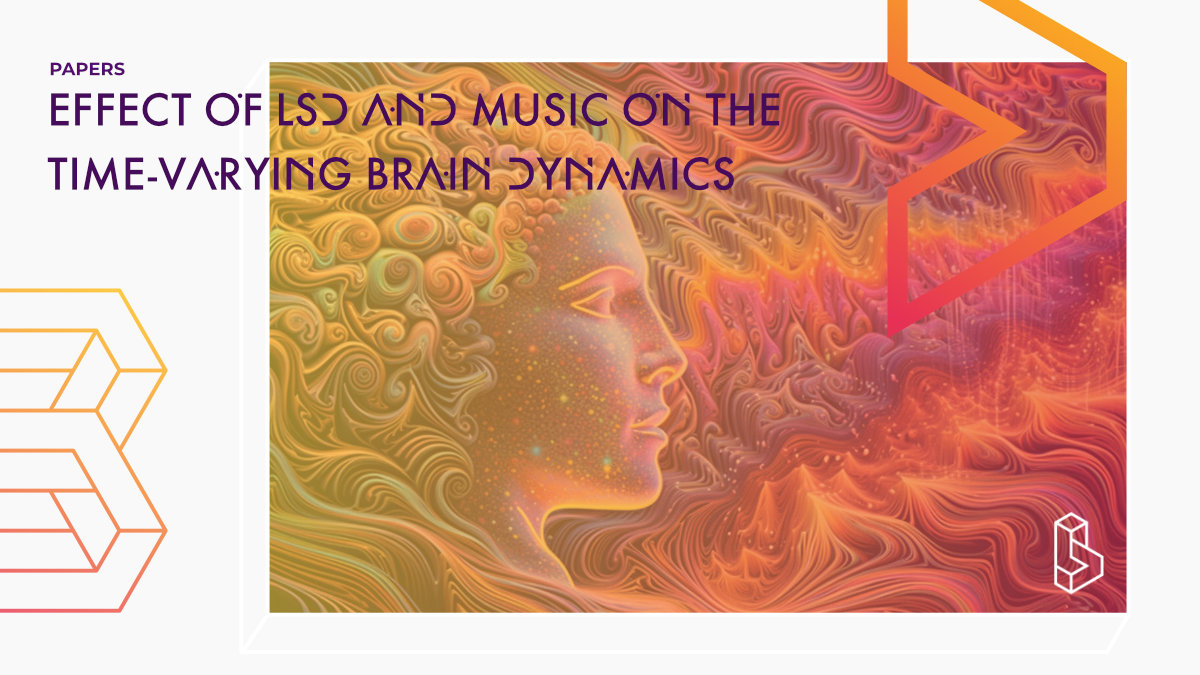This analysis of earlier LSD (75μg) data investigates the effect of music on brain state dynamics using fMRI. The results indicate that the interaction of music and psychedelics led to changes in the time-varying brain activity of the task-positive state, with music potentially having a long-term influence on the resting state, particularly on states involving task-positive networks. The study concludes that music, as a crucial component of “setting,” may influence the resting state during a psychedelic experience.
Abstract of Effect of LSD and music on the time-varying brain dynamics
“Rationale Psychedelics are getting closer to being widely used in clinical treatment. Music is known as a key element of psychedelic-assisted therapy due to its psychological effects, specifically on the emotion, meaning-making, and sensory processing. However, there is still a lack of understanding in how psychedelics influence brain activity in experimental settings involving music listening.
Objectives The main goal of our research was to investigate the effect of music, as a part of “setting,” on the brain states dynamics after lysergic acid diethylamide (LSD) intake.
Methods We used an open dataset, where a group of 15 participants underwent two functional MRI scanning sessions under LSD and placebo influence. Every scanning session contained three runs: two resting-state runs separated by one run with music listening. We applied K-Means clustering to identify the repetitive patterns of brain activity, so-called brain states. For further analysis, we calculated states’ dwell time, fractional occupancy and transition probability.
Results The interaction effect of music and psychedelics led to change in the time-varying brain activity of the task-positive state. LSD, regardless of the music, affected the dynamics of the state of combined activity of DMN, SOM, and VIS networks. Crucially, we observed that the music itself could potentially have a long-term influence on the resting-state, in particular on states involving task-positive networks.
Conclusions This study indicates that music, as a crucial element of “setting,” can potentially have an influence on the subject’s resting-state during psychedelic experience. Further studies should replicate these results on a larger sample size.”
Authors: Iga Adamska & Karolina Finc
Find this paper
Effect of LSD and music on the time-varying brain dynamics
https://doi.org/10.1007/s00213-023-06394-8
Open Access | Google Scholar | Backup | 🕊
Cite this paper (APA)
Adamska, I., & Finc, K. (2023). Effect of LSD and music on the time-varying brain dynamics. Psychopharmacology, 1-14.
Compound Details
The psychedelics given at which dose and how many times
LSD 75 mg | 1xLinked Research Papers
Notable research papers that build on or are influenced by this paper
Neural correlates of the LSD experience revealed by multimodal neuroimagingUsing three different neuroimaging techniques (ASL, BOLD, MEG), this single-blind, placebo-controlled study highlighted the neurological underpinnings of the LSD/psychedelic (75μg) experience.

